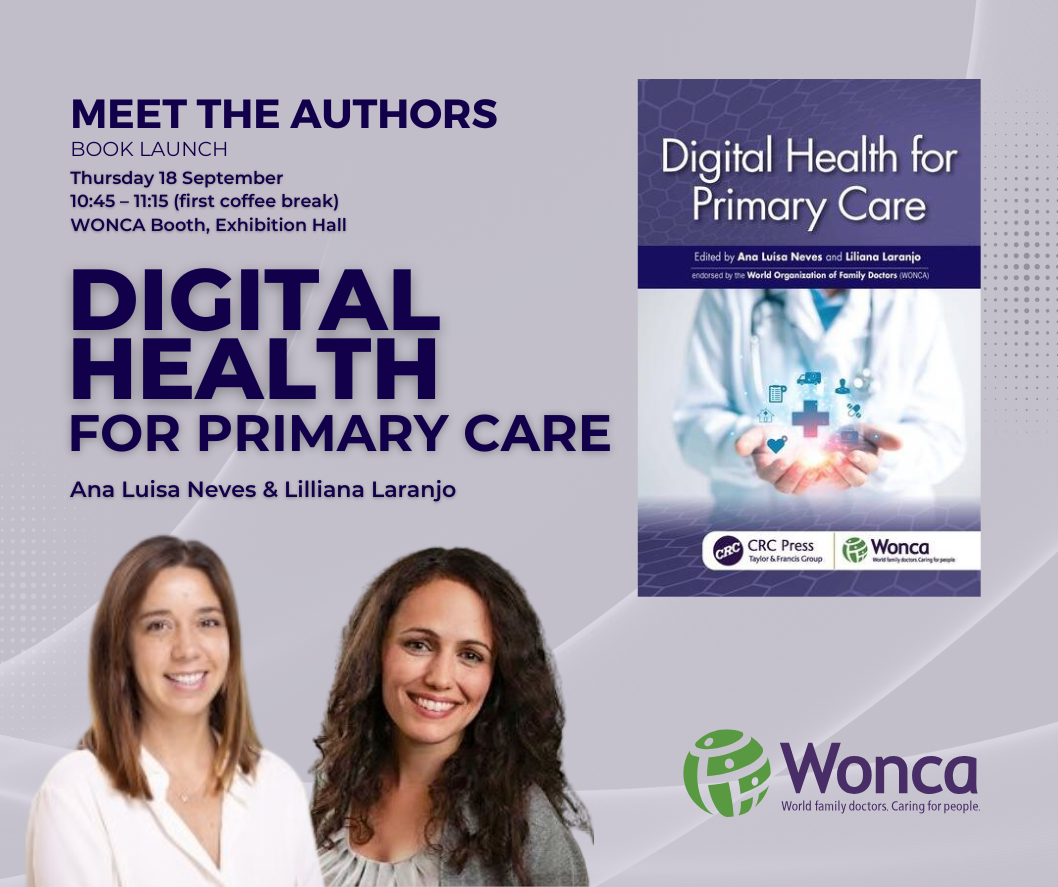Author Interview: Digital Health for Primary Care


This interview with Ana Luisa Neves and Liliana Laranjo, editors of the upcoming book Digital Health for Primary Care, explores why this resource is so timely and how it brings together global expertise to support the integration of digital technologies into primary care practice. The book offers evidence-based frameworks, real-world examples, and practical insights for clinicians, educators, policymakers, and technology developers worldwide.
Why did you feel this book was needed now?
Over the past years we have seen a rapid increase in digital health technologies, yet very few have been translated into day-to-day primary-care workflows. Most guidance is still disease-specific, hospital-centric or focused on single technologies. We felt there was a need to offer a strong evidence-based framework for integrating Digital Health into clinical practice in Primary Care.
There’s huge potential for digital technologies to transform how we deliver care, and in many places, this transformation is already underway. But progress isn’t automatic. We wanted to create a resource that not only showcases examples of successful integration but also encourages a more intentional approach moving forward. To make digital health work in primary care, we need alignment across many stakeholders—clinicians, patients, policymakers, and tech developers. That includes practical considerations around infrastructure, workforce training, funding, and equitable access. The book is a step toward supporting that unified effort.
How did you approach representing the diversity of global perspectives?
We aimed to ensure representation of a diversity of global perspectives in the book and curated an author team from the different WHO regions. We also include concrete global exemplars highlighting successes from low-, middle- and high-income settings, which can help readers avoid reinventing the wheel and make more informed, context-sensitive decisions.
What was it like coordinating such a large and international group of contributors?
It was definitely a challenge—but a rewarding one. Coordinating a large, international group of contributors required balancing diverse perspectives with a clear editorial vision. As a central editorial team, our mission was to ensure consistency by providing guidelines and shaping content while preserving unique voices.
Themes and structure helped us to maintain focus, while collaboration tools and regular communication bridged time zones and cultural differences. Real-time editing in a shared environment reduced version-control chaos and let authors “listen in” on each other’s sections for cross-pollination. Rather than forcing uniformity, our goal was curated diversity: different voices that complement rather than clash. We are deeply grateful to our global network of contributors: their local insights, generosity, and collaborative spirit were instrumental in shaping this narrative.
What contribution does this book make to the field of digital health in primary care?
From the start, we understood that although the specific examples in the book may become outdated in time as digital health technologies evolve, the core principles of user-centred design, impact evaluation, and sustainable implementation and integration, will remain essential. These are essential building blocks for anyone navigating digital transformation in primary care—regardless of which tools are currently in vogue. In that sense, we hope the book provides a flexible and practical framework that clinicians, educators, and policymakers can adapt and apply across different contexts and over time.
Were there any moments during the editorial process that surprised or challenged you?
Writing this book during a wave of rapid innovation in generative AI felt very timely. We were reassured of the importance of our editorial approach to provide adaptable frameworks, critical-appraisal tools and real-world success stories and cautionary tales that will help readers navigate the fast-paced digital health future in Primary Care.
Who do you see as the main audience for this book – and how do you hope they’ll use it?
This book is primarily for family doctors and GPs who want to better understand and apply digital tools in their day-to-day work. We’ve tried to offer a structured and accessible overview of innovations that are directly relevant to primary care, along with honest reflections on the risks and limitations involved. We hope it will equip healthcare professionals with the essential knowledge and critical insight needed to effectively navigate and apply Digital Health tools in clinical practice.
Additionally, we hope it serves as a resource for educators training the next generation of practitioners, and as a guiding tool for researchers, technologists, and policymakers who are developing, evaluating and implementing digital technology in Primary Care. Our hope is that it will empower a wide audience to leverage digital technologies more confidently, safely, and effectively to improve health outcomes across different communities, globally.
Meet the authors at the WONCA World Conference in Lisbon

Digital Health for Primary Care
Edited by Ana Luisa Neves and Liliana Laranjo
Book launch: Thursday 18 September, 10:45 – 11:15 (First coffee break)
Location: WONCA booth, Exhibition Hall
The book will be available for purchase at the conference, and can also be pre-ordered here:
Pre-order the book
Explore other titles in the WONCA Family Medicine Book Series:
See the full series